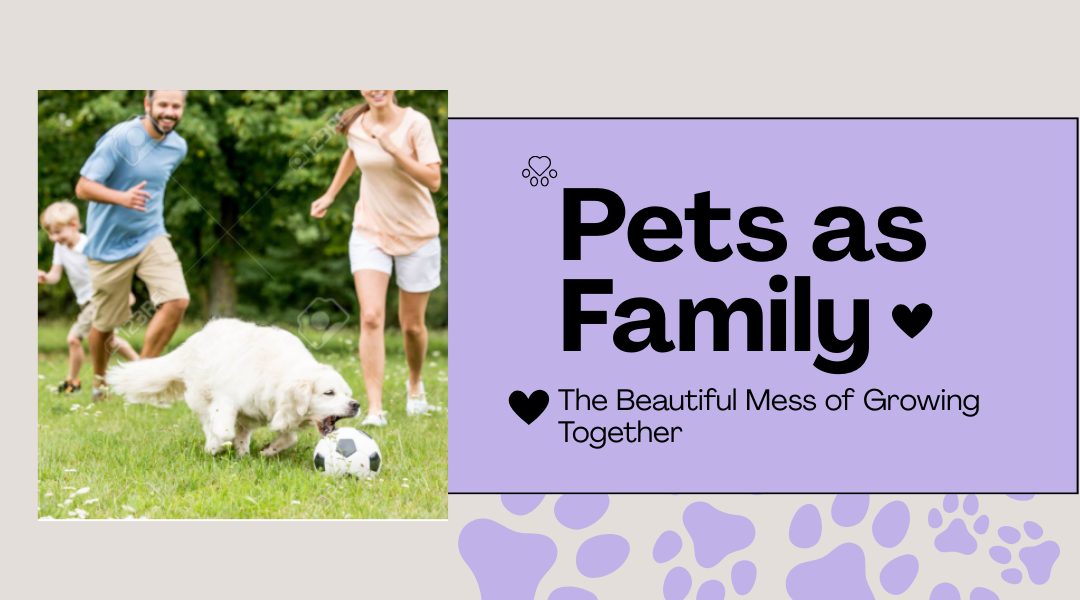There’s something magical about watching a child’s chubby fingers carefully pour kibble into a dog bowl, or seeing an elderly man’s face light up when his tabby cat jumps onto his lap. Pets don’t just share our homes—they weave themselves into the fabric of our families, teaching us lessons no human ever could.
When Kids and Creatures Collide
Remember your first childhood pet? Mine was a goldfish named Captain that lived for seven years (a minor miracle). What felt like simple companionship was actually shaping me:
- That sinking feeling when I forgot to feed Captain taught me responsibility
- His excited wiggles when I approached the tank showed me consistency matters
- The day we buried him under the oak tree was my first gentle lesson in loss
Modern research confirms what pet-loving families have always known: kids with animals develop stronger immune systems, higher empathy levels, and even better nonverbal communication skills. But forget the studies—just watch a six-year-old “reading” a picture book to their patiently listening Labrador to see the magic in action.
Golden Years, Furry Hearts
My neighbor Mrs. Kowalski swore her ancient poodle, Muffin, added five years to her life. “Who else would care if I got out of bed before noon?” she’d chuckle. For seniors, pets become:
- Social lubricants: That scruffy terrier at the end of the leash invites more conversations than any dating app
- Medication reminders: Dogs don’t let you forget their 5PM dinner—might as well take your pills too
- Touch anchors: Stroking soft fur satisfies our deep human need for physical connection
When the assisted living facility introduced therapy chickens (yes, chickens), residents who hadn’t spoken in months began sharing childhood farm stories. There’s profound therapy in the way a hen clucks contentedly when held.
The Family Glue
The Thompson family’s weekly “pupdates” crack me up:
- Monday: Dad and teen son bond over teaching the border collie ridiculous tricks
- Wednesday: Siblings team up for “poop patrol” in the backyard
- Friday: Family movie night with the cat predictably blocking the TV
Their secret? They didn’t just get a dog—they welcomed a four-legged life coach who taught them about:
- Negotiation (whose turn is it for the 6AM walk?)
- Compassion (when the dog eats a whole pizza and needs emergency vet care)
- Unconditional love (even after someone “accidentally” leaves the gate open… again)
The Real Pet Care Guide They Don’t Hand You at the Shelter
Forget sterile checklists—here’s the truth about keeping your furry (or scaly) family member thriving:
1. Feed Them Like You Care
- That bargain bin kibble? Might as well feed them cardboard. Splurge on decent food—their vet bills will thank you.
- Pro tip: Add warm water to dry food for older pets. It’s like turning crackers into soup.
2. Exercise Their Brains Too
- Dogs: Hide treats in muffin tins covered with tennis balls
- Cats: A cardboard box + ping pong balls = hours of entertainment
- Birds: Teach them to “forage” by wrapping treats in paper
3. Learn Their Language
- The slow blink from your cat? That’s kitty for “I love you.”
- A dog licking its lips when you’re angry? They’re begging you to calm down.
- Rabbits thumping? Either danger’s near or they hate your new haircut.
4. Prepare for the Inevitable
- Know where the 24-hour emergency vet is before you need it
- Keep a pet first aid kit (hydrogen peroxide saves lives when Fido eats chocolate)
- Take monthly photos—you’ll want to remember that one white whisker
5. Let Them Change You
The messy truth? That rescue mutt who chewed your favorite shoes will teach you more about forgiveness than any meditation app. The aloof cat who finally sits on your lap after three years will redefine patience. And that moment when your child comforts their crying hamster after a nightmare? That’s the stuff that builds character.
At the end of the day, pets aren’t projects to manage—they’re mirrors showing us how to love better, live fuller, and find joy in the everyday. Now if you’ll excuse me, my parrot is yelling “TACOS!” (his word for dinner time) and the dog is dramatically sighing by his empty bowl. Some family traditions write themselves.
